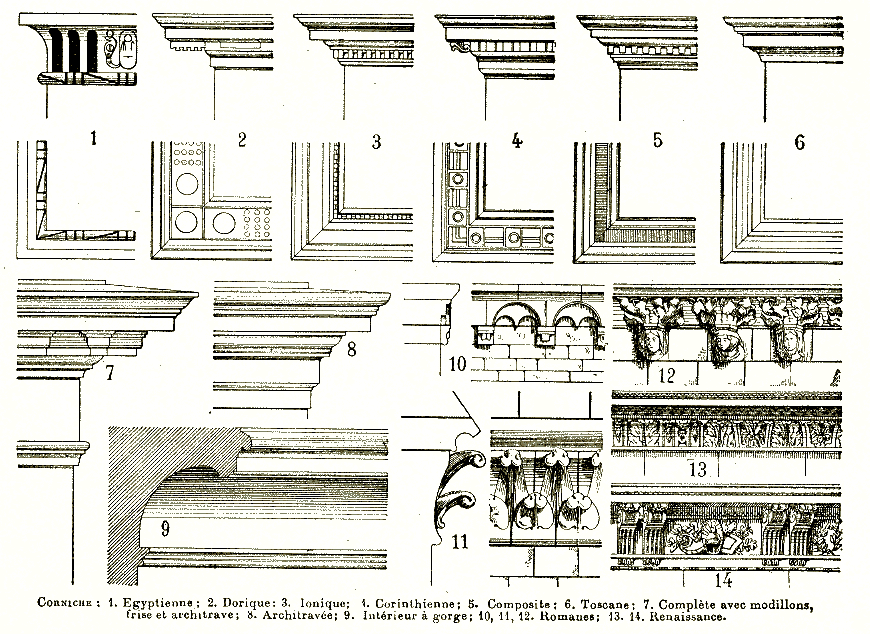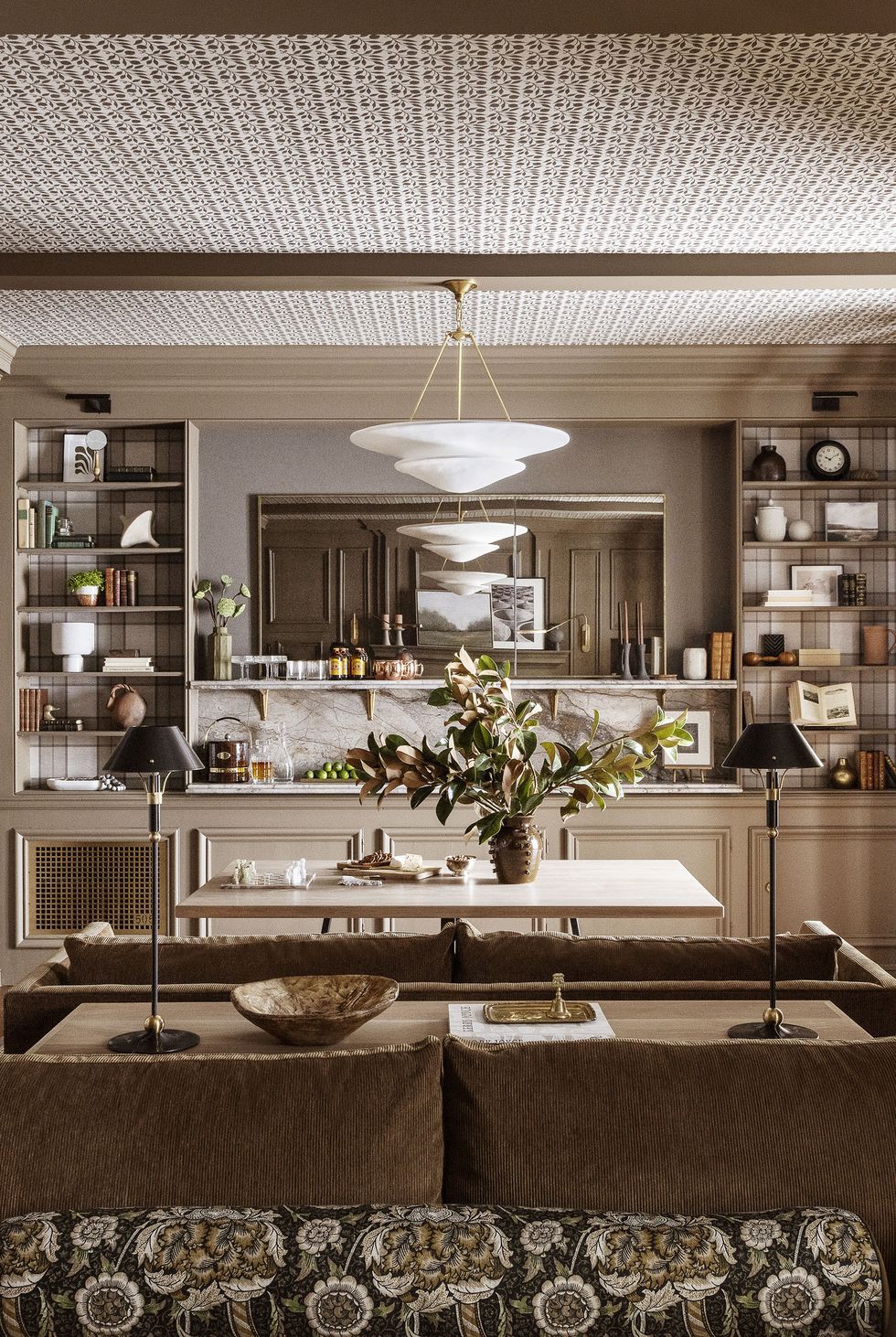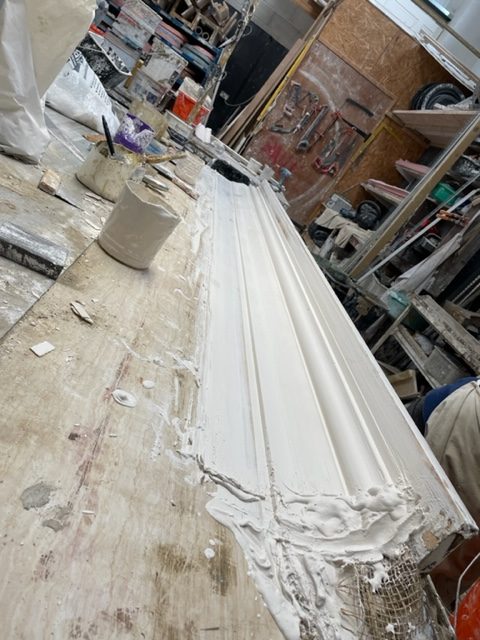Throughout the course of history, people have utilised decorative mouldings as a means of enhancing the aesthetic appeal of buildings and residences. These plaster mouldings, ranging from intricate ceiling designs to elaborate wall decorations, have withstood the test of time and remain a favoured choice for infusing grace and allure into any setting. Within the following discourse, we shall embark on a voyage through the annals of plaster mouldings, delving into their origins, progression, and lasting allure.

Origins of Decorative Mouldings
Plaster, an enduring construction material, has stood the test of time since ancient civilisations. Traces of its utilisation can be traced back to the remarkable city of Jericho in 7500 BC, a testament to its early adoption. Throughout history, the Egyptians, Greeks, and Romans harnessed the potential of plaster in their remarkable architectural achievements, ingeniously integrating ornamental elements like mouldings and reliefs.
Venturing into the Middle Ages, Europe fervently embraced the versatility of plaster, employing it extensively for both structural and aesthetic purposes. Churches and castles became veritable showcases of plaster craftsmanship, with captivating designs and intricate patterns gracing the walls and ceilings, evoking a sense of grandeur and awe.
The Renaissance and Baroque Periods
Plaster mouldings experienced a surge in popularity and refinement during the Renaissance and Baroque eras.
The Italian Renaissance witnessed a resurgence of classical architectural techniques, employing plaster mouldings to reimagine the magnificence of ancient Rome and Greece.
During the Baroque period, plaster mouldings evolved into exquisitely intricate and ornamental works of art, adorned with elaborate designs and meticulous details.
These masterpieces were often embellished with gilding or vibrant paint, further enhancing their opulence and grandeur.

The Rise of Decorative Mouldings in the 18th and 19th Centuries
During the 18th and 19th centuries, affluent households and esteemed individuals embraced the inclusion of ornamental mouldings as an integral part of their residences. The emergence of neoclassical and Georgian architectural styles gave way to the utilisation of plaster mouldings as embellishments, enriching the aesthetic appeal of both indoor and outdoor spaces.
These eras witnessed the artistic implementation of plaster mouldings in crafting elaborate ceiling designs characterised by meticulous patterns and intricate details, thereby bestowing an air of opulence upon any given room.
The Victorian Era
During the Victorian period, homeowners embraced plaster mouldings as a favoured means of embellishing their dwellings. As the middle class burgeoned, these decorative elements became more attainable and were incorporated into an expanded array of homes.
The plaster mouldings of this era boasted exquisite intricacy, showcasing an array of floral and geometric motifs while also drawing inspiration from the opulent Gothic and Rococo styles.




The 20th century and beyond
During the early 1900s, the appeal of plaster mouldings dwindled as the utilisation of contemporary construction materials such as concrete and steel gained prominence.
Nevertheless, the 1980s witnessed a resolute resurgence of enthusiasm for conventional building techniques and materials, which sparked a renaissance in the realm of plaster mouldings. In the present day, plaster mouldings persist as a favoured option for embellishing homes and structures.
Thanks to technological advancements and innovative methodologies, artisans can now fashion plaster mouldings in an extensive array of styles and designs, rendering them an exceptionally versatile choice for any given space.
Modern Uses of Plaster Mouldings
Although plaster mouldings are commonly linked to traditional and historic structures, their usage has extended to modern residences and buildings as a means to infuse a sense of sophistication and individuality.
Within contemporary homes, these mouldings are frequently employed to establish a captivating focal point within a room, be it through an ornate ceiling design or an imposing wall.
Furthermore, they introduce an element of texture and dimension, resulting in a distinct and visually captivating ambiance.
Types of Plaster Mouldings
There are several types of plaster mouldings, each with its own unique characteristics and uses. Some of the most common types include:
Decorative Mouldings
Although plaster mouldings are commonly linked to traditional and historic structures, their usage has extended to modern residences and buildings as a means to infuse a sense of sophistication and individuality. Within contemporary homes, these mouldings are frequently employed to establish a captivating focal point within a room, be it through an ornate ceiling design or an imposing wall.
Furthermore, they introduce an element of texture and dimension, resulting in a distinct and visually captivating ambiance.
Ceiling Plaster Mouldings
The utilisation of ceiling plaster mouldings is a common practice in enhancing the aesthetic appeal of ceilings, infusing rooms with an air of refinement and allure. These mouldings encompass a diverse spectrum of styles, ranging from minimalist and unadorned designs to intricate and ornate patterns, allowing for a multitude of creative possibilities.

How Plaster Mouldings Are Made
In the past, artisans relied on their skilled hands to create plaster mouldings, using a blend of plaster, water, and assorted enhancers. This concoction was carefully poured into a mould, patiently left to solidify, and then meticulously extracted and affixed to its desired location.
However, the present era has ushered in a remarkable transformation, thanks to cutting-edge methodologies and advanced technology. The art of crafting plaster moulds has embraced the marvels of 3D printing, enabling craftsmen to fashion intricate and exquisite designs with unparalleled precision and efficiency.
Maintaining plaster mouldings
With proper care and maintenance, decorative mouldings can last for decades. Here are some tips for keeping your plaster mouldings in top condition:
- Dust regularly to prevent build-up and discoloration.
- Avoid using harsh chemicals or abrasive cleaners on plaster mouldings.
- Repair any cracks or damage as soon as possible to prevent further deterioration.
- Consider hiring a professional for more extensive repairs or restoration work.
The Future of Plaster Mouldings
The ever-advancing technology has opened up boundless avenues for plaster molding. With their capacity to craft increasingly intricate and refined patterns, plaster mouldings are poised to maintain their enduring appeal as a favoured option for embellishing residential and commercial structures.
Conclusion
Throughout the ages, decorative mouldings have proven their durability and enduring appeal, remaining a timeless choice for enhancing the beauty and sophistication of any environment.
Evolving from ancient civilisations to contemporary households, plaster mouldings have seamlessly adapted to changing architectural and design trends, guaranteeing their place as an essential element for years to come. With an illustrious past and limitless creative potential, it is certain that plaster mouldings will continue to be a cherished and integral part of the ever-evolving world of architecture and design.

Buy Online with Confidence
Our products are manufactured using the highest quality materials and traditional techniques, methods and plasters, hessian and timber lathes by our master craftsmen so you can be assured of receiving the highest quality products.

Restoration Specialists
For over 30 years Abby Mouldings have been proudly restoring, manufacturing and fitting quality plaster mouldings for domestic and commercial period, listed and heritage properties across Devon, Cornwall, Somerset and beyond.

Traditional Plastering Services
Our plastering service includes all types of internal wall and ceiling plaster, external plastering including lime plaster, ceiling repair and restoration of heritage ceilings including strapwork and ornate plaster ceilings and insurance work.
